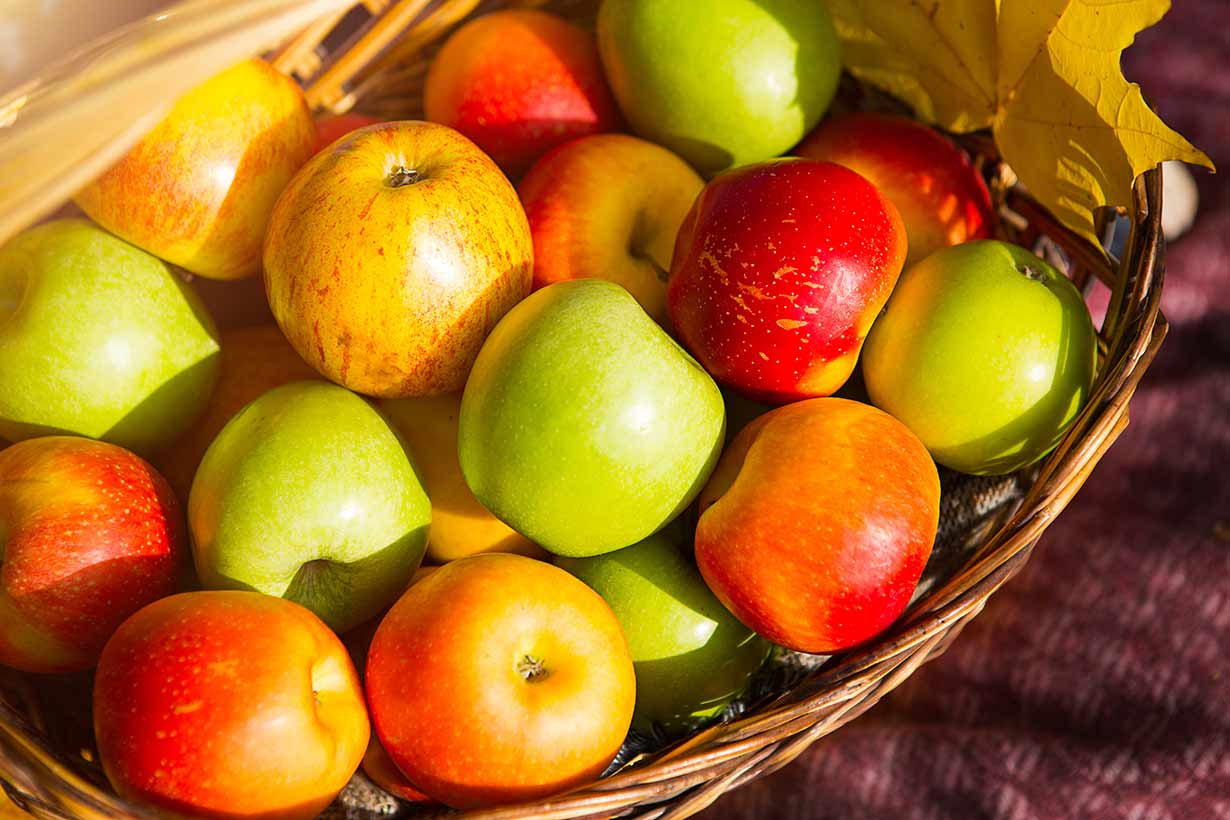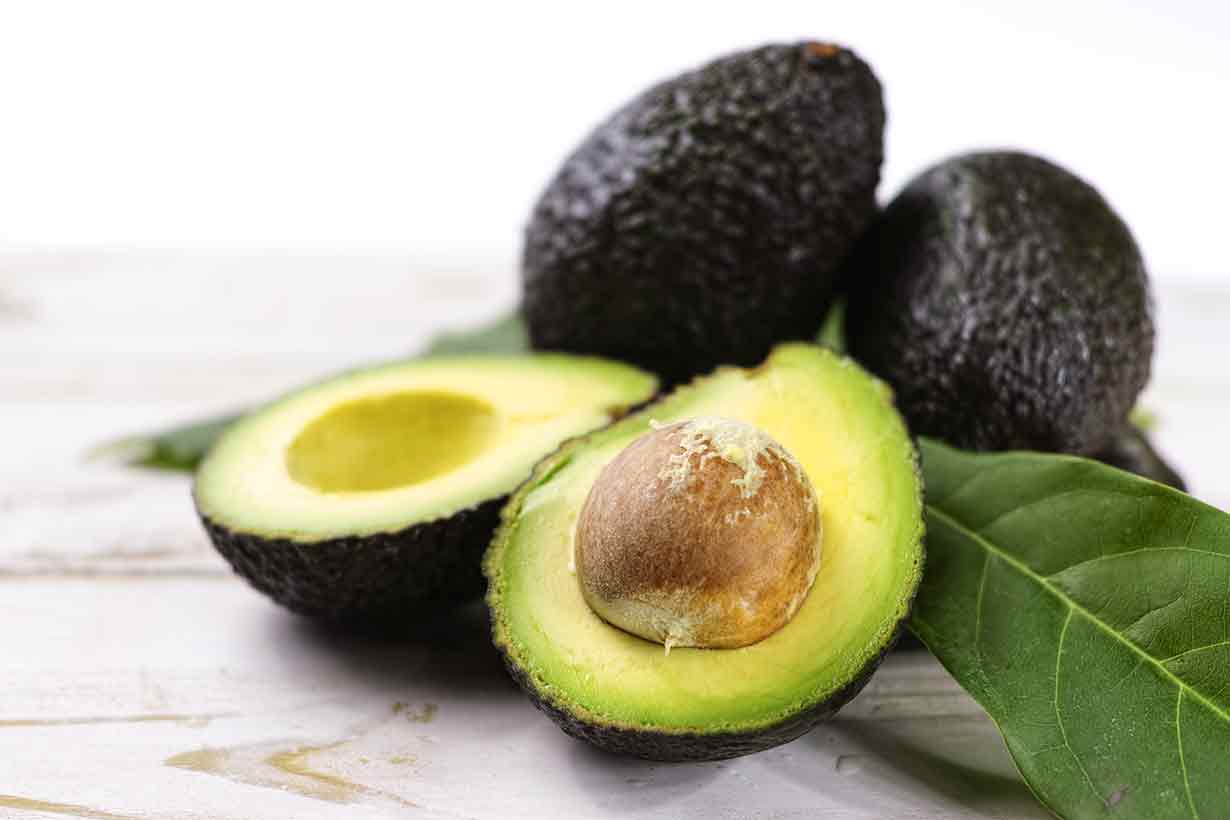Oranges are a delicious and juicy variety of fruit known for their sweet flavor.
They also offer some nutritional benefits, with their high vitamin C content taking the spotlight. However, there are numerous types of oranges, and they each have unique nutritional properties and taste profiles.
In this article, we delve into the nutritional values of ten common types of oranges. You will find the basic nutrition facts and vitamin C content for each variety, presented both per 100 grams and per fruit to account for varying sizes and weights.
Unless otherwise stated, the source of all nutritional data is the USDA’s FoodData Central database.
We have also calculated percent daily values (% DV) based on the FDA’s published daily values.
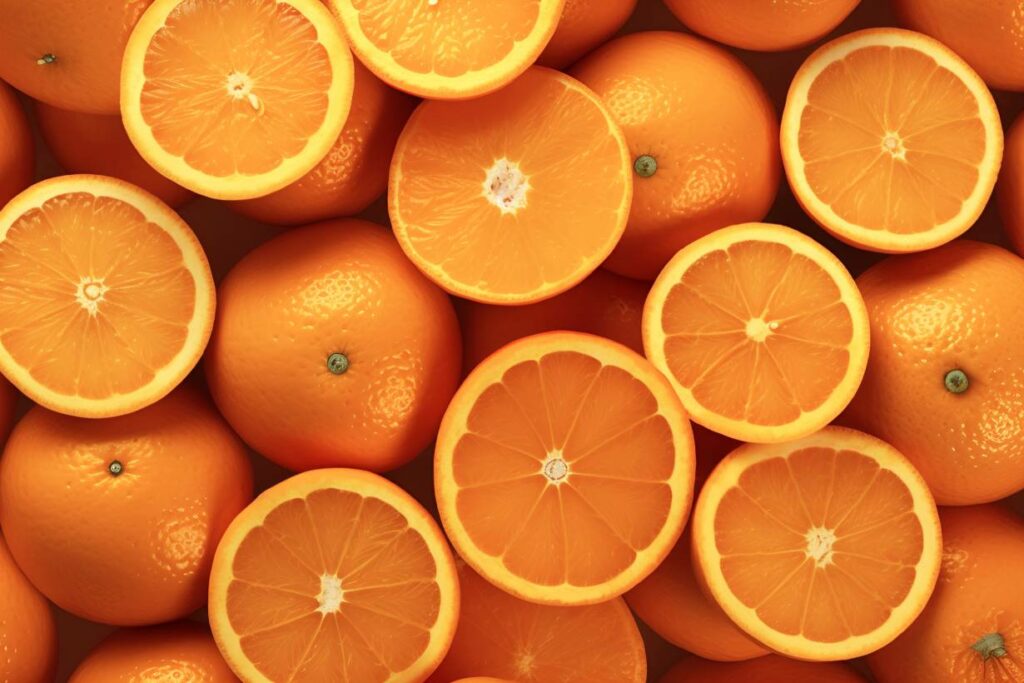
Table of contents
1) Blood Orange
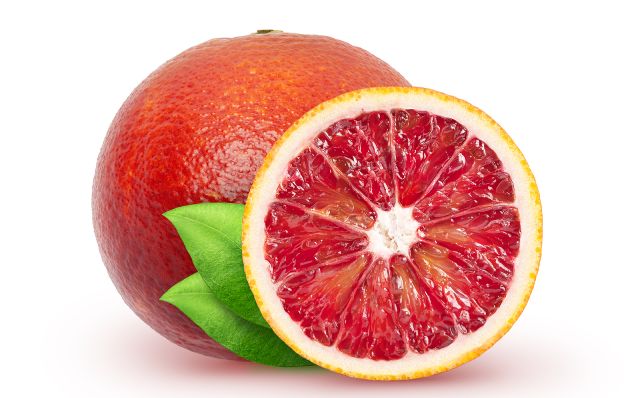
Blood oranges present a unique orange variety characterized by its deep red flesh and sweet taste. Like other red fruits, this red hue comes from their anthocyanin content.
Among blood oranges, there are three main cultivars: moro, tarocco, and sanguinello. The first two originate from Italy, while the latter comes from Spain (1).
The moro variety is the most common and distinct with its red flesh. Tarocco has a slightly milder color, while sanguinello boasts a dark, reddish-purple flesh.
Beyond the fruit aisle, it is possible to see blood oranges in use in a range of dessert and cocktail products due to their enticing color.
Here are the nutritional values for blood oranges, sourced from the Trustwell nutrition database (2):
| Name | Amount Per 100g | % DV | Amount Per 148g Blood Orange | % DV |
|---|---|---|---|---|
| Calories | 47 kcal | 70 kcal | ||
| Carbohydrates | 10.14 g | 3.7% | 15.0 g | 5.5% |
| Fiber | 1.78 g | 6.4% | 2.64 g | 9.4% |
| Sugars | 8.34 g | 12.35 g | ||
| Fat | 0.68 g | 0.9% | 1.0 g | 1.3% |
| Protein | 0.68 g | 1.4% | 1.0 g | 2% |
| Cholesterol | 0 mg | 0% | 0 mg | 0% |
| Sodium | 0 mg | 0% | 0 mg | 0% |
| Vitamin C | 44.59 mg | 50% | 66.0 mg | 73.3% |
2) Cara Cara Orange
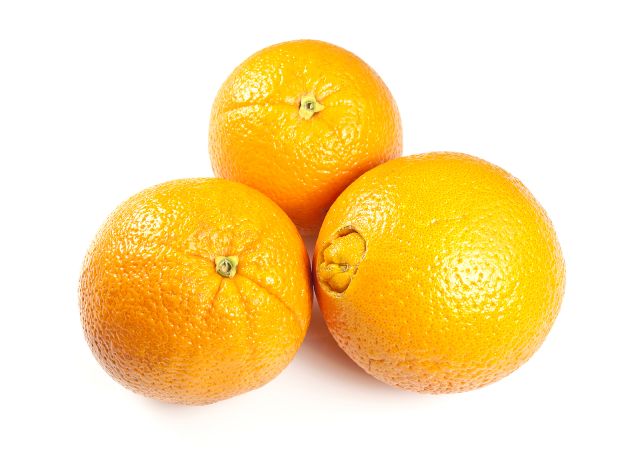
The Cara Cara orange, scientifically known as ‘Citrus sinensis ‘Cara Cara,’ stands as one of the most familiar orange varieties (3).
Its size has a close resemblance to blood oranges, and it too has a reddish flesh. However, this red hue is more of an orange-red than the deep red of blood oranges.
In terms of taste, Cara Cara oranges carry a slightly more bitter note than blood oranges.
An interesting fact about the Cara Cara orange is its origin, which traces back to a mutation in a navel orange tree. The discovery took place back in 1976 in Venezuela (3).
For a detailed overview of the nutritional values of the Cara Carqa orange, refer to the table below, with the data sourced from the Trustwell nutrition database (2):
| Name | Amount Per 100g | % DV | Amount Per 154g Cara Cara Orange | % DV |
|---|---|---|---|---|
| Calories | 52 kcal | 80 kcal | ||
| Carbohydrates | 12.34 g | 4.5% | 19.0 g | 6.9% |
| Fiber | 1.95 g | 7.0% | 3.0 g | 10.7% |
| Sugars | 9.09 g | 14.0 g | ||
| Fat | 0 g | 0% | 0 g | |
| Protein | 0.65 g | 1.3% | 1.0 g | 2% |
| Cholesterol | 0 mg | 0% | 0 mg | 0% |
| Sodium | 0 mg | 0% | 0 mg | 0% |
| Vitamin C | 58.44 mg | 64.9% | 90.0 mg | 100% |
3) Clementine
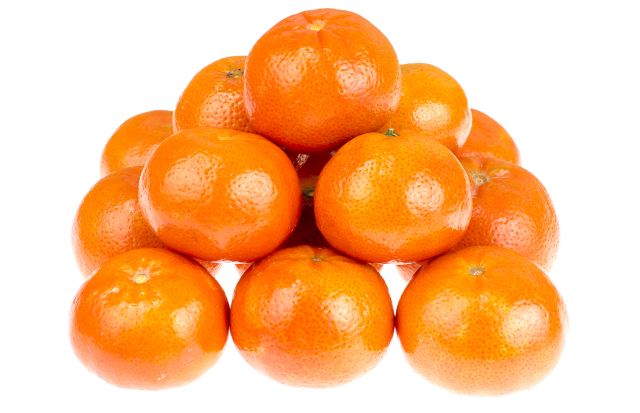
Clementines, scientifically known as Citrus x clementina, are a hybrid fruit from sweet oranges and mandarin, Their origin dates back to 1902 in Algeria (4).
Among the various orange options, clementines are one of the smallest, typically weighing around 74 grams. A clementine is 87% water by weight (5).
Unlike some other small orange species, clementines are seedless and have easy-to-peel skin, making them somewhat hassle-free.
The combination of these appealing features, along with their sweet and juicy flesh, contributes to the popularity of clementines.
Now, let’s look at the nutritional properties of a typical clementine (5):
| Name | Amount Per 100g | % DV | Amount Per 74g Clementine | % DV |
|---|---|---|---|---|
| Calories | 47 kcal | 35 kcal | ||
| Carbohydrates | 12.0 g | 4.4% | 8.88 g | 3.2% |
| Fiber | 1.7 g | 6.1% | 1.26 g | 4.5% |
| Sugars | 9.18 g | 6.79 g | ||
| Fat | 0.15 g | 0.2% | 0.11 g | 0.1% |
| Protein | 0.85 g | 1.7% | 0.63 g | 1.3% |
| Cholesterol | 0 mg | 0% | 0 mg | 0% |
| Sodium | 1 mg | <0.1% | 0.74 mg | <0.1% |
| Vitamin C | 48.8 mg | 54.2% | 36.1 mg | 40.1% |
4) Kumquat
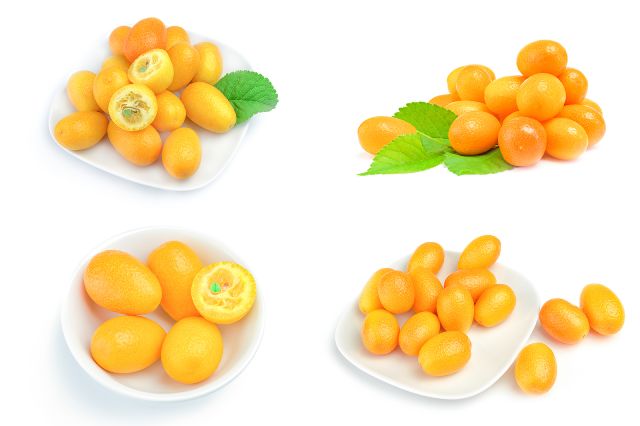
Although not classified as true botanical oranges, kumquats share a place in the same citrus family, Rutacea, as oranges (6). They have the scientific name of Citrus japonica.
In terms of appearance, kumquats bear a striking resemblance to oranges, but they are the approximate size of a cherry tomato. Consequently, each kumquat fruit only weighs approximately 19 grams (7).
Unlike oranges, people typically enjoy the whole kumquat, including the skin of the fruit. This unique trait is why kumquats have a high fiber content compared to other types of orange.
We can trace the origin of these small fruits to China, and the first recorded mention of kumquats dating back to the year 1178 (8).
Kumquats have a fresh, juicy, sweet, and sour citrus taste. However, they are noticeably tarter than sweet oranges.
Here are the nutritional values of kumquat (7):
| Name | Amount Per 100g | % DV | Amount Per 19g Kumquat | % DV |
|---|---|---|---|---|
| Calories | 71 kcal | 14 kcal | ||
| Carbohydrates | 15.9 g | 5.8% | 3.02 g | 1.1% |
| Fiber | 6.5 g | 23.2% | 1.24 g | 4.4% |
| Sugars | 9.36 g | 1.78 g | ||
| Fat | 0.86 g | 1.1% | 0.16 g | 0.2% |
| Protein | 1.88 g | 3.8% | 0.36 g | 0.7% |
| Cholesterol | 0 mg | 0% | 0 mg | 0% |
| Sodium | 10 mg | 0.4% | 1.9 mg | <0.1% |
| Vitamin C | 43.9 mg | 48.8% | 8.34 mg | 9.3% |
For more information on kumquats, see the following guide:
Kumquat: What is This Unique Citrus Fruit?
5) Mandarin
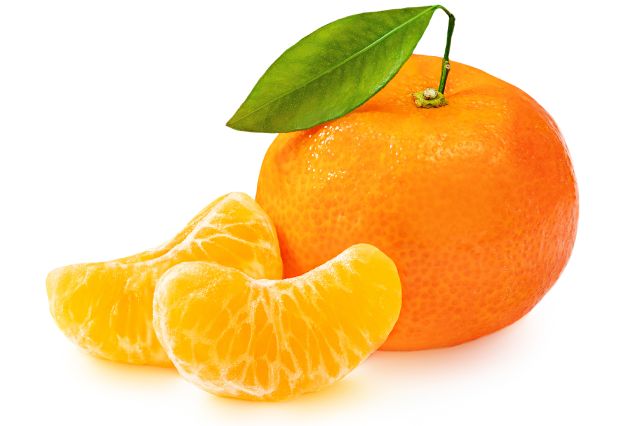
Mandarins, scientifically known as Citrus reticulata, are small citrus fruits native to South-East Asia (9).
Compared to other small orange varieties, such as clementines, mandarins are slightly larger, with an average weight of 88 grams.
There are numerous varieties of mandarin, and some types contain seeds while others are seedless.
It’s worth noting that other orange varieties, like clementines and tangerines, belong to the broader category of mandarins.
Using data from the NCC Food and Nutrient database, here are the nutritional properties of a typical mandarin (10):
| Name | Amount Per 100g | % DV | Amount Per 88g Mandarin | % DV |
|---|---|---|---|---|
| Calories | 53 kcal | 47 kcal | ||
| Carbohydrates | 13.34 g | 4.9% | 11.74 g | 4.3% |
| Fiber | 1.80 g | 6.4% | 1.58 g | 5.6% |
| Sugars | 10.58 g | 9.31 g | ||
| Fat | 0.31 g | 0.4% | 0.27 g | 0.4% |
| Protein | 0.81 g | 1.6% | 0.71 g | 1.4% |
| Cholesterol | 0 mg | 0% | 0 mg | 0% |
| Sodium | 2.0 mg | <0.1% | 1.76 mg | <0.1% |
| Vitamin C | 26.7 mg | 29.7% | 23.50 mg | 26.1% |
6) Navel Orange
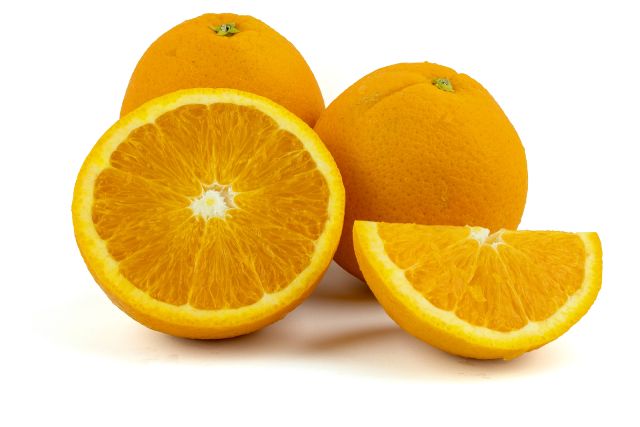
Navel oranges are the common oranges we can find on grocery store shelves, and they boast a bright orange color.
They are recognizable due to their large and round shape. The navel orange is typically seedless, and juicy, with a sweet flavor and little bitterness.
On average, a navel orange weighs approximately 140 grams (11).
Scientifically known as Citrus sinensis, navel oranges are also known as ‘sweet oranges.’ These sweet oranges get their name from the human-like navel shape found on one side of the fruit.
Interestingly, the navel orange is actually a hybrid fruit of the pomelo and mandarin orange (12).
Below, you’ll find a table displaying the typical nutritional values of navel oranges (11):
| Name | Amount Per 100g | % DV | Amount Per 140g Navel Orange | % DV |
|---|---|---|---|---|
| Calories | 49 kcal | 69 kcal | ||
| Carbohydrates | 12.5 g | 4.5% | 17.5 g | 6.4% |
| Fiber | 2.2 g | 7.9% | 3.08 g | 11% |
| Sugars | 8.5 g | 11.9 g | ||
| Fat | 0.15 g | 0.2% | 0.21 g | 0.3% |
| Protein | 0.91 g | 1.8% | 1.27 g | 2.5% |
| Cholesterol | 0 mg | 0% | 0 mg | 0% |
| Sodium | 1 mg | <0.1% | 1.4 mg | <0.1% |
| Vitamin C | 59.1 mg | 65.7% | 82.7 mg | 91.9% |
7) Satsuma
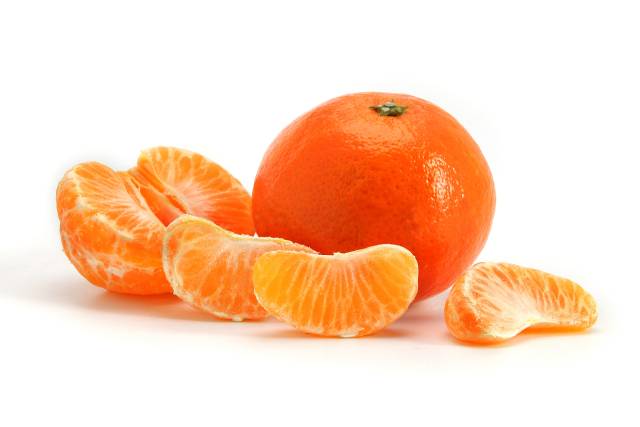
Satsumas, scientifically known as Citrus unshiu, are a small and popular orange variety with origins in East Asia.
Interestingly, the earliest recorded mention of satsuma dates back over 700 years ago in Japan, though it is thought to have originated in China (13).
Characterized by their small to medium size, satsumas are easy to peel and are often seedless, making them a convenient fruit snack. Their sweet taste has earned them recognition as a consumer favorite.
The fruit takes its ‘satsuma’ name from the old Satsuma province in Japan, where these oranges were first commercially cultivated (13).
A typical satsuma weighs approximately 60 grams. Now, let’s look at their nutritional values, based on nutritional data from the Trustwell database (2):
| Name | Amount Per 100g | % DV | Amount Per 60g Satsuma | % DV |
|---|---|---|---|---|
| Calories | 41 kcal | 25 kcal | ||
| Carbohydrates | 9.83 g | 3.6% | 5.90 g | 2.1% |
| Fiber | 1.33 g | 4.8% | 0.80 g | 2.9% |
| Sugars | 8.50 g | 5.10 g | ||
| Fat | 0.21 g | 0.3% | 0.13 g | 0.2% |
| Protein | 0.92 g | 1.8% | 0.55 g | 1.1% |
| Cholesterol | 0 mg | 0% | 0 mg | 0% |
| Sodium | 1.67 mg | 0.1% | 1 mg | <0.1% |
| Vitamin C | 26.67 mg | 29.6% | 16.0 mg | 17.8% |
8) Seville Orange (Bitter Orange)
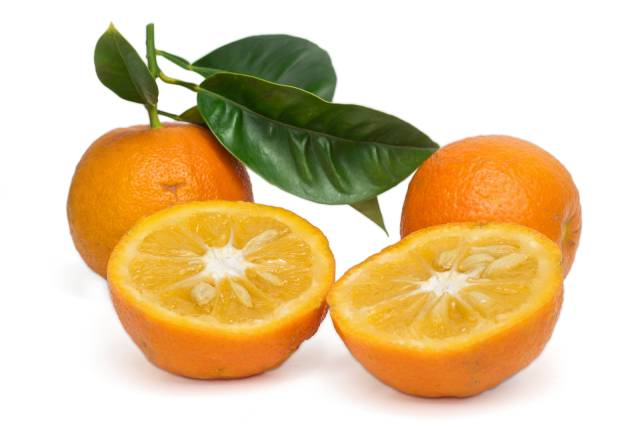
Seville oranges, scientifically known as Citrus x aurantium, are small to medium in size with a round shape (14).
Other common names for Seville oranges include bitter orange and sour orange.
While their origins are thought to trace back to South East Asia, Seville oranges were introduced to Spain as early as the 10th century (15).
The distinctive bitterness of Seville oranges makes them a traditional choice for making marmalade, as sugar can balance and neutralize the bitter taste. Unlike other types of oranges, they are not commonly consumed as whole fruit.
Unfortunately, there is no reliable nutritional data entry for bitter oranges per fruit in a major nutrition database.
However, the University of Purdue provides the nutritional values of the fruit per 100 grams, based on several samples, as shown below (16):
| Name | Amount Per 100g | % DV |
|---|---|---|
| Calories | 37 – 66 kcal | |
| Carbohydrates | 9.7 – 15.2 g | 3.5 – 5.5% |
| Fiber | 0.4 g | 1.4% |
| Sugars | – | – |
| Fat | 0.1 g | 0.1% |
| Protein | 0.6 – 1.0 g | 1.2 – 2.0% |
| Cholesterol | 0 mg | 0% |
| Sodium | – | – |
| Vitamin C | 45 – 90 mg | 50 – 100% |
9) Tangerine
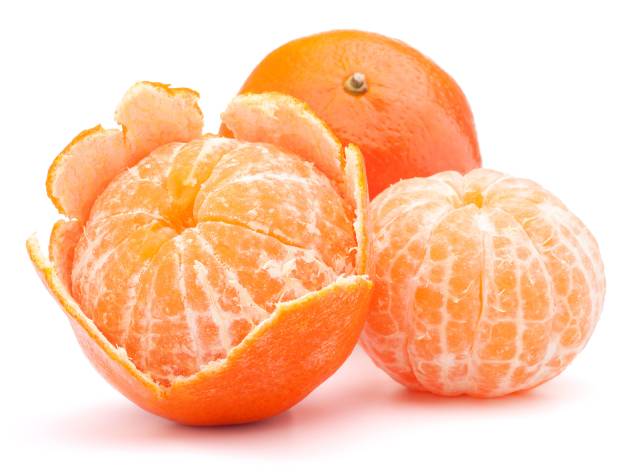
Tangerines, a part of the wider mandarin class of oranges, are another small and sweet orange variety.
These small to medium-sized oranges sport a sweet taste and easily peelable skin, making them a popular choice of citrus fruit.
However, tangerines have a slight tartness that goes alongside their overall sweet flavor.
Known scientifically as ‘Citrus tangerina,’ tangerines are believed to have originated in Southeast Asia (17).
Nutritionally, tangerines have a nutrition profile as shown below (18):
| Name | Amount Per 100g | % DV | Amount Per 109g Tangerine | % DV |
|---|---|---|---|---|
| Calories | 53 kcal | 58 kcal | ||
| Carbohydrates | 13.3 g | 4.8% | 14.5 g | 5.3% |
| Fiber | 1.8 g | 6.4% | 1.96 g | 7.0% |
| Sugars | 10.6 g | 11.6 g | ||
| Fat | 0.31 g | 0.4% | 0.34 g | 0.4% |
| Protein | 0.81 g | 1.6% | 0.88 g | 1.8% |
| Cholesterol | 0 mg | 0% | 0 mg | 0% |
| Sodium | 2 mg | 0.1% | 2.18 mg | 0.1% |
| Vitamin C | 26.7 mg | 29.7% | 29.1 mg | 32.3% |
10) Valencia Orange
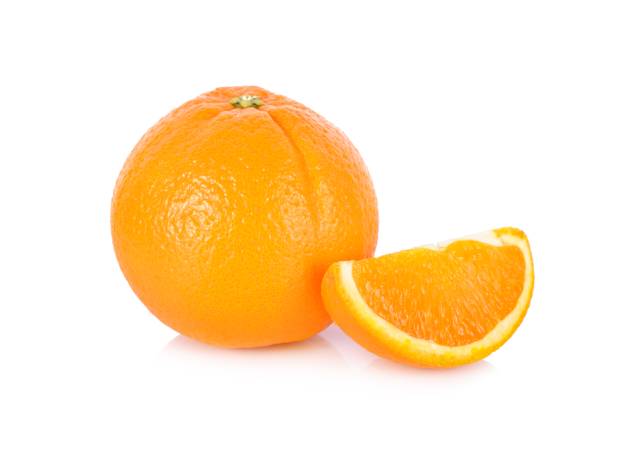
Valencia oranges are medium-to-large, sweet, and juicy oranges with slightly tart notes.
Surprisingly, despite containing ‘Valencia’ in their name, these oranges have roots in California, United States.
Credit for cultivating the first Valencia oranges goes to William Wolfskill of California, who named them after Valencia in Spain, which was renowned for its sweet oranges (19, 20).
Due to their high juice content, Valencia oranges play a significant role in commercial orange juice production (21).
Here are the typical nutritional properties of Valencia oranges (22):
| Name | Amount Per 100g | % DV | Amount Per 121g Valencia Orange | % DV |
|---|---|---|---|---|
| Calories | 49 kcal | 59 kcal | ||
| Carbohydrates | 11.9 g | 4.3% | 14.4 g | 5.2% |
| Fiber | 2.5 g | 8.9% | 3.02 g | 10.8% |
| Sugars | – | – | ||
| Fat | 0.3 g | 0.4% | 0.36 g | 0.5% |
| Protein | 1.04 g | 2.1% | 1.26 g | 2.5% |
| Cholesterol | 0 mg | 0% | 0 mg | 0% |
| Sodium | 0 mg | 0% | 0 mg | 0% |
| Vitamin C | 48.5 mg | 53.9% | 58.7 mg | 65.2% |
How To Eat Oranges in Different Ways
People commonly eat oranges as whole fruit.
However, there are numerous other ways to enjoy them, including the following:
- As freshly squeezed orange juice.
- In refreshing smoothies.
- Used as an ingredient in marinades, sauces, and dressings.
- Adding small orange segments from clementines, mandarins, and tangerines to salads as a fresh and juicy ingredient.
- Marmalade: made by cooking oranges with sugar and water.
Final Thoughts
Oranges are a juicy and refreshing fruit that comes in a diverse range of types.
While each variety may offer something unique, they share a similar nutritional composition, and they have some shared general benefits.
Notably, all types of oranges provide an excellent source of vitamin C, alongside a modest amount of fiber.



